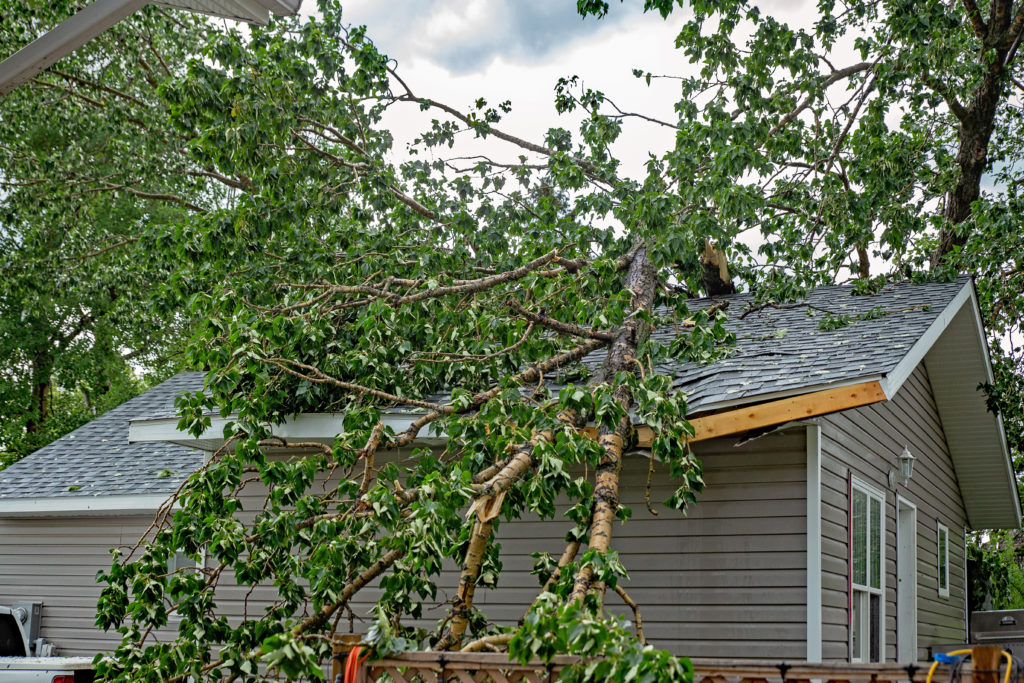

As storm season approaches, it is important to make sure that your roof is ready. Your roof can be your first line of defense against storms and other severe weather events, so taking the time to inspect and prepare it for the upcoming season can help you avoid costly damage in the future. We will discuss how different weather conditions affect roofs, tips on inspecting your roof before a storm hits, as well as some preventative measures you can take to protect your home from severe weather events. Read on to learn more about how you can ensure that your roof is prepared for whatever Mother Nature throws its way!
Roofs are an essential component of any structure, providing protection from external elements and framing the look and feel of a building. When it comes to understanding roofs, one must take into account a variety of factors that can determine its durability and endurance. Materials play a significant role in the resistance of a roof: asphalt shingles, metal roofing, clay or concrete tiles are some of the most common options available. Another important factor is the age of the roof; all roofs have an expiration date, and eventually, even the most durable materials will degrade. The angles and shape of the roof are also vital to its longevity, as different types of rooftops require different maintenance strategies and provide varying degrees of protection from external elements. Ultimately, understanding the features that make up a roof can go a long way in improving its durability and extending its lifespan.
Your roof is a vital component of your home, providing necessary protection against the forces of nature. However, constantly changing weather patterns can take a toll on your roof, leading to various damages and ultimately impacting its structural integrity. Depending on the weather conditions in your area, your roof might experience heavy rainfall, strong winds, snow, hail or even tornados. Each of these weather events can leave its unique mark on your roof, affecting its appearance, durability, and longevity. If neglected, this damage can expose your home to potential leaks, mold, and other issues leading to costly repairs down the line. It’s crucial to keep an eye on your roof’s health and take preventative measures to combat the harsh weather conditions that could weaken it over time.
Storm season can wreak havoc on your home’s roof if you’re not prepared. It’s important to take steps to ensure that your roof is in tip-top shape prior to any looming storms. Start by inspecting your roof to identify any damage or issues that need to be addressed. Check for loose roof tiles, rusted flashing, or cracked sealant and, if necessary, hire a professional to make repairs. In addition to inspecting your roof, make sure your gutters are clean and free of debris. Clogged gutters can cause water to overflow and create water damage to your roof or home, so it’s important to keep them clear. Taking these simple steps can help prepare your roof for storm season and keep your home safe and sound through even the roughest of storms.
Your roof is one of the most important aspects of your home, protecting you and your family from the elements. However, during a storm, it can suffer significant damage. Heavy winds can cause shingles to lift or even tear off completely, while hail can create dents or holes in the surface. If debris like tree branches falls onto your roof, it can dent or puncture the roof’s structure. Water also poses a threat during storms, causing leaks and water damage. In order to repair storm damage to your roof, it is essential to first assess the extent of the damage and determine whether repairs or a full replacement are necessary. A professional roofing contractor has the expertise and equipment necessary to get your roof back in top condition and protect your home from future storm damage.
Overall, the roof of your home is a crucial component that helps protect you and your family from harsh weather conditions. It’s important to take steps prior to storm season by inspecting your roof for any damage or issues that need attention. Cleaning out gutters can also help prevent water damage if storms occur. If strong winds, hail, snow, rain or debris cause harm to your roof during a storm then it’s essential to assess the extent of the damage before repairing it with professional assistance. Taking these simple precautions will ensure that not only is your roof ready for whatever Mother Nature throws at it but so will you and your family!